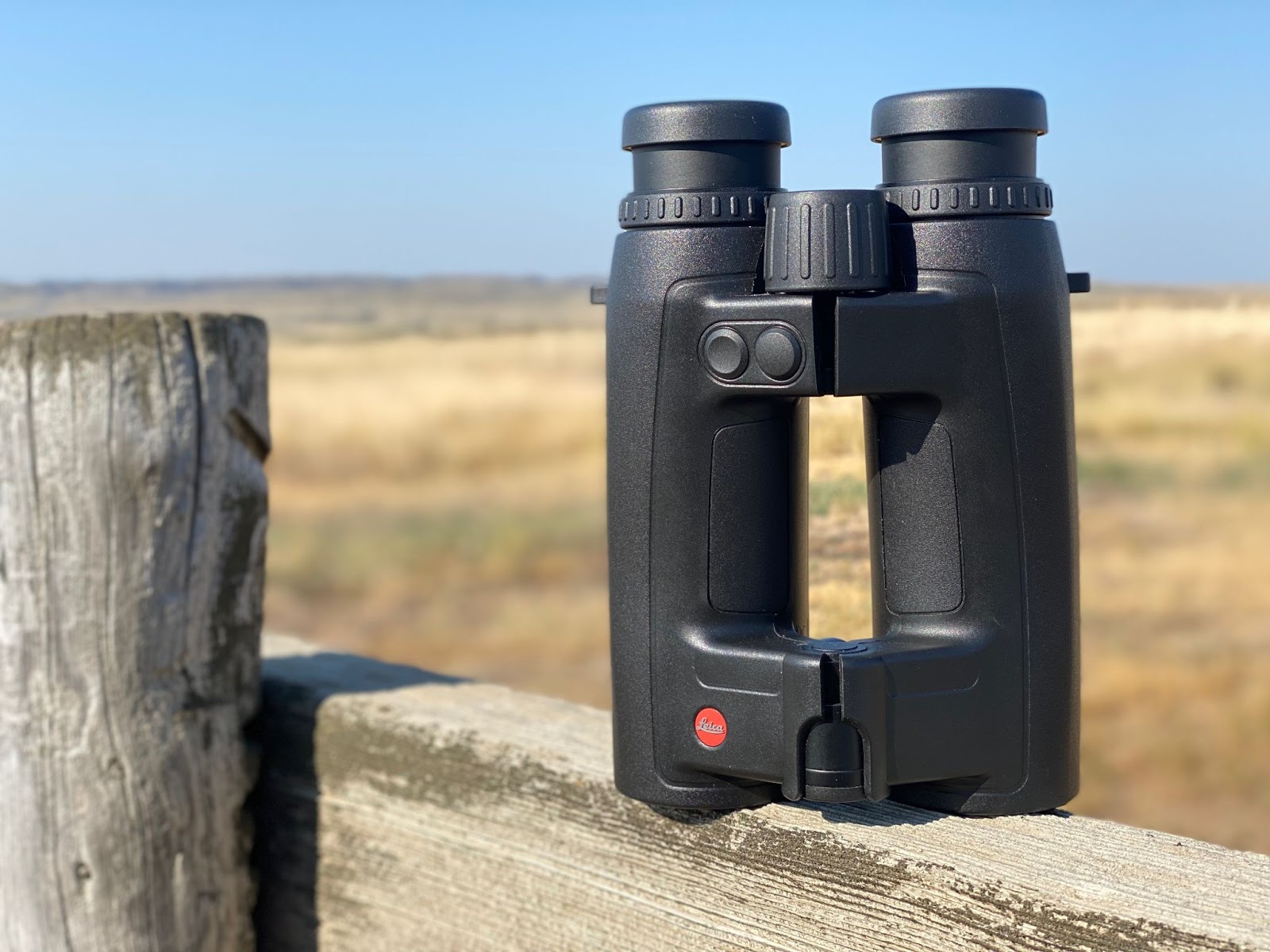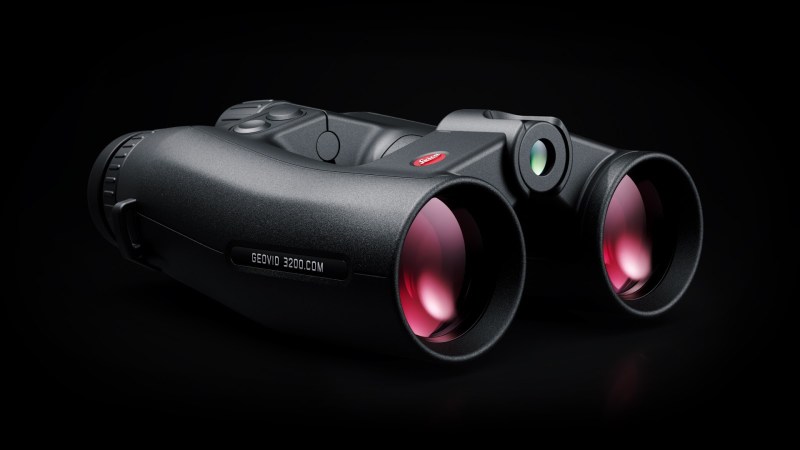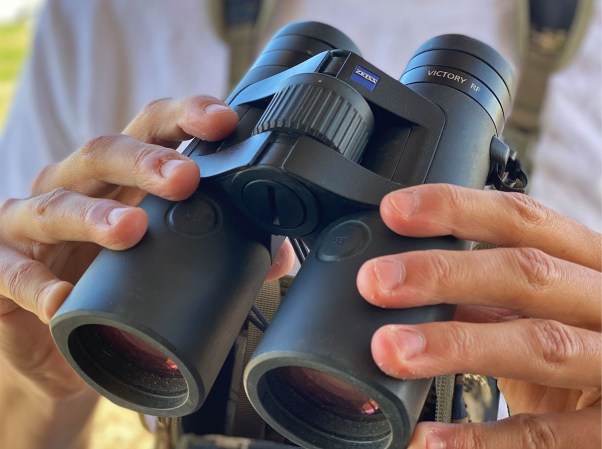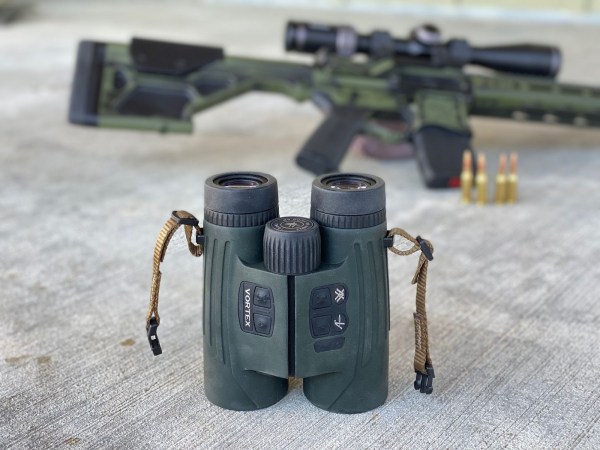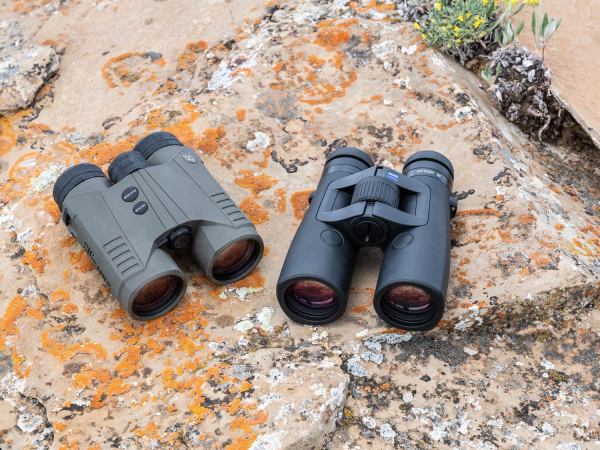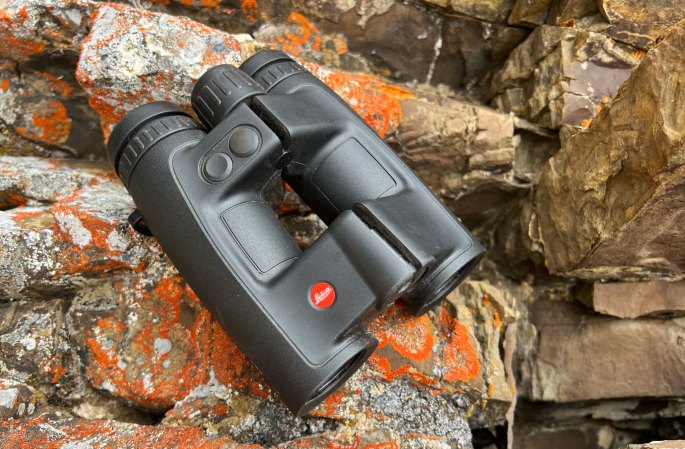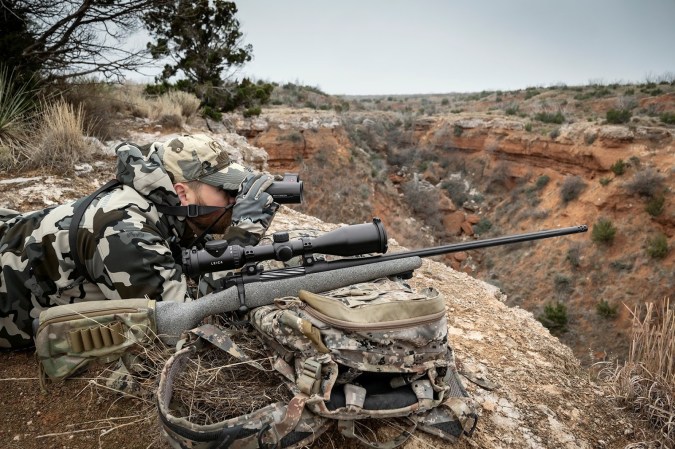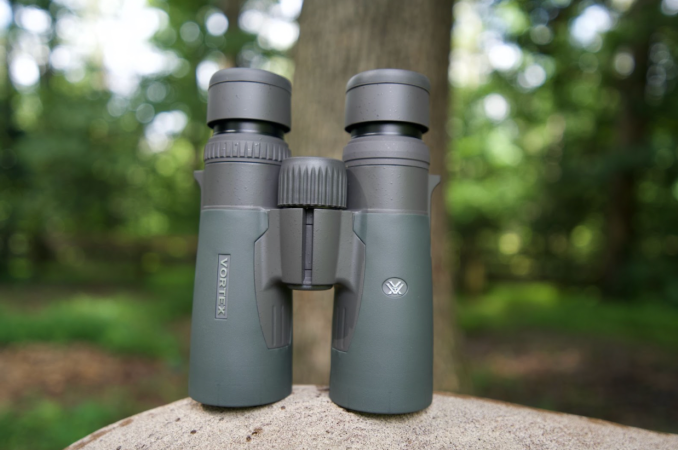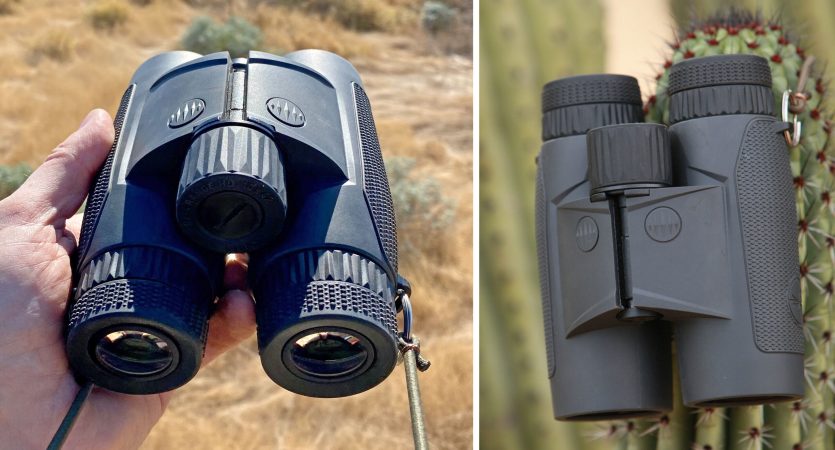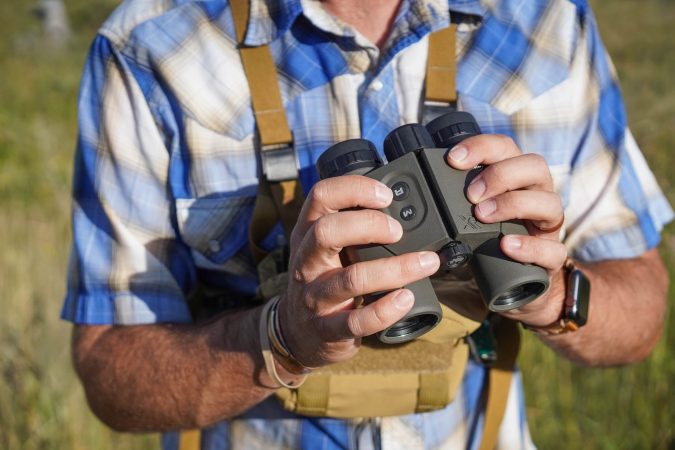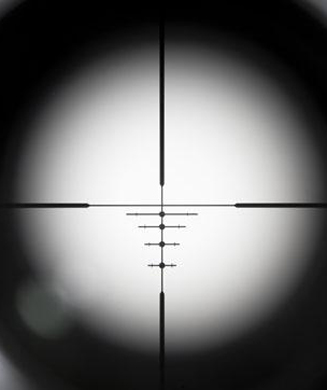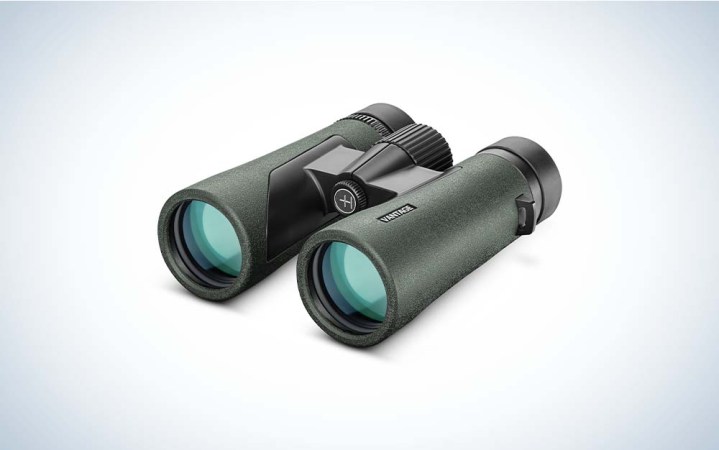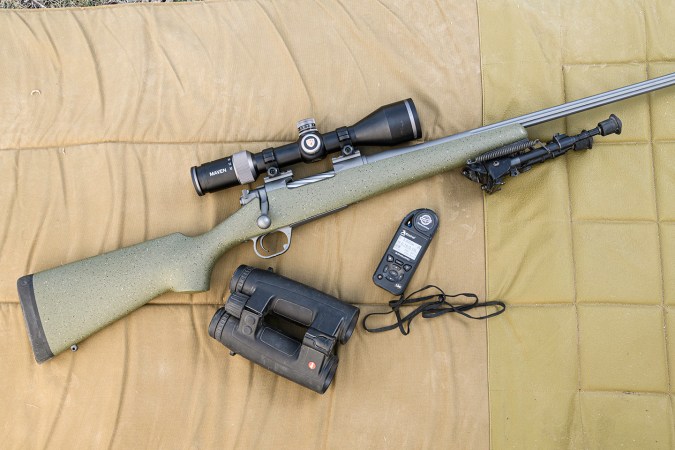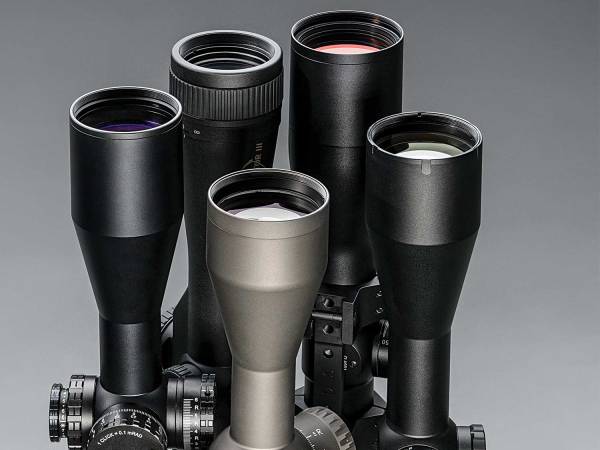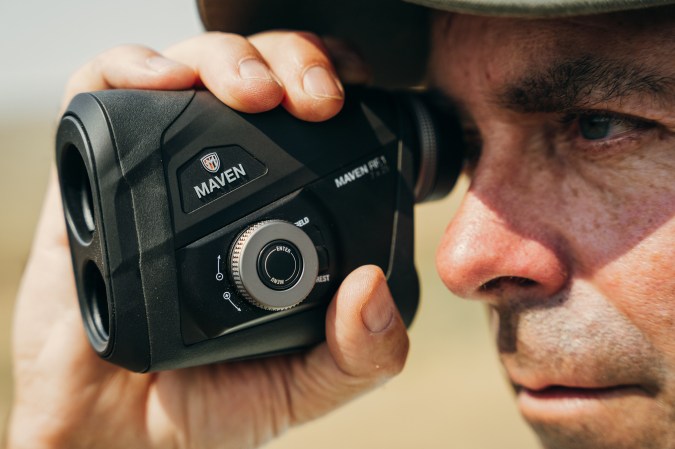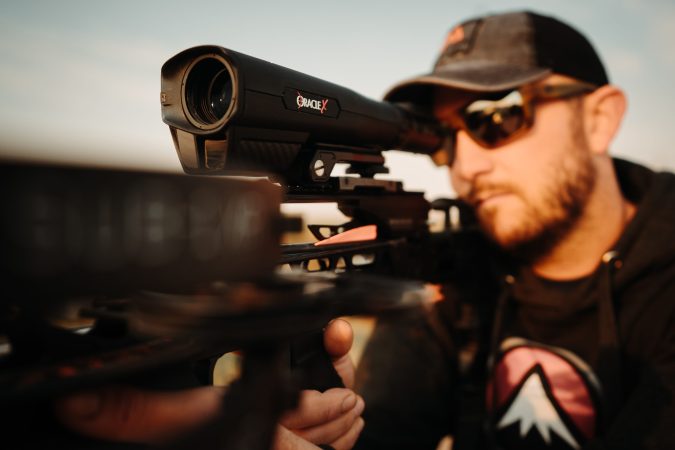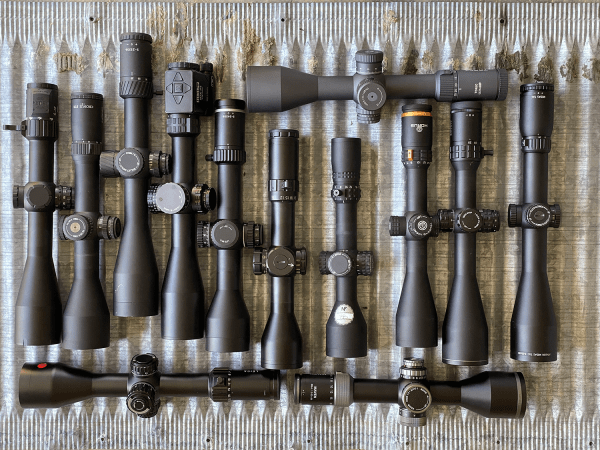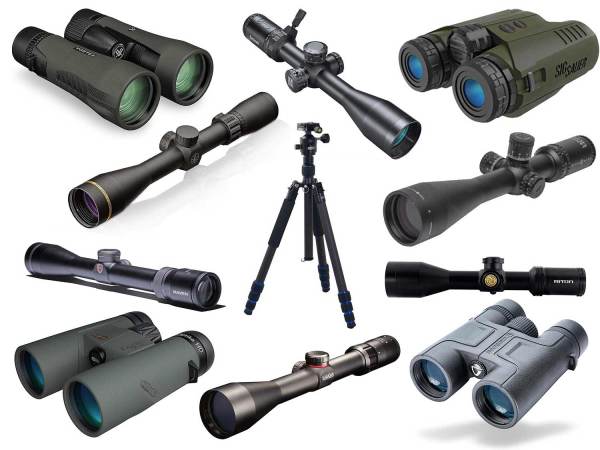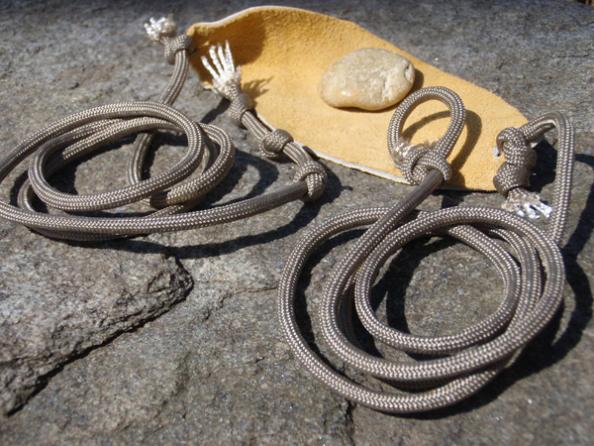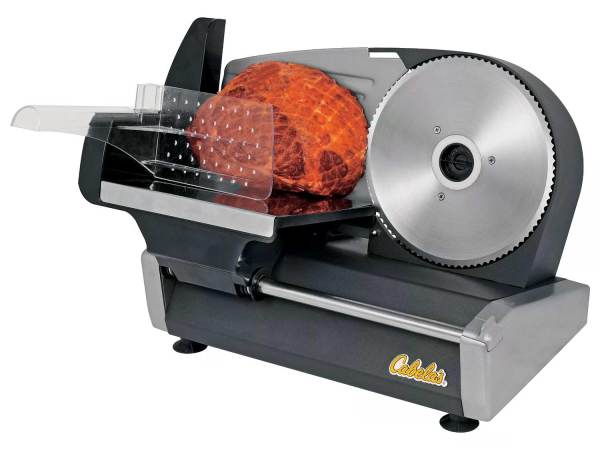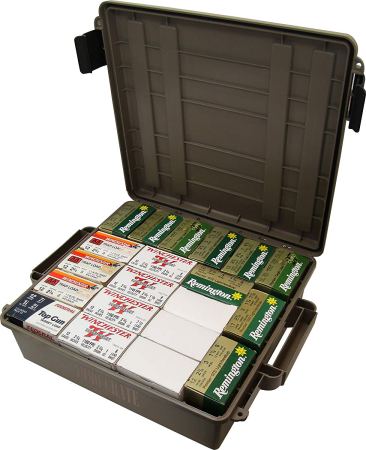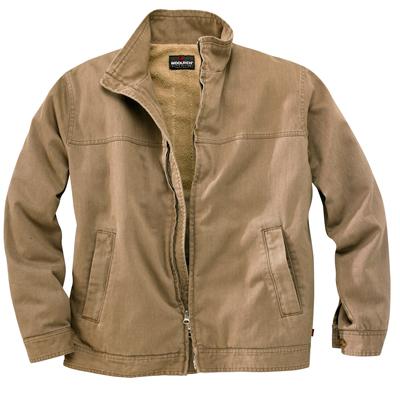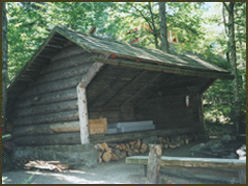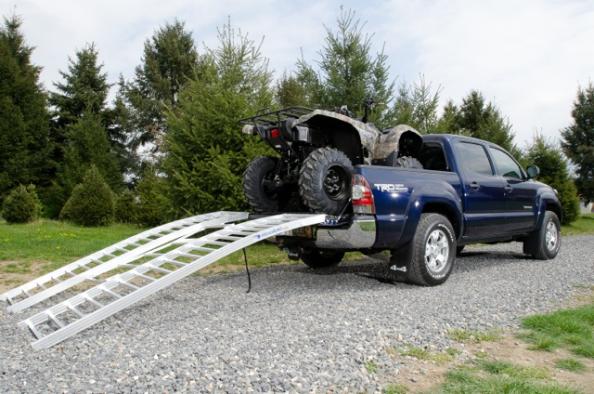We may earn revenue from the products available on this page and participate in affiliate programs. Learn More ›
Leica has long been a leader in the optical part of sports optics. Leica binoculars and spotting scopes are built around world-class glass developed in the best European tradition. In the past decade, Leica rangefinders have been industry leaders. So, it was only natural that the company would merge the optical side of its business with the electronics side to produce class-leading rangefinding binoculars. The Leica Geovid 3200.COM is the best expression of this confluence of electro-optics, and is specially configured for long-distance shooters and hunters.
Leica Geovid 3200.COM specs:
- 10-power with 42mm objective lenses
- Unique Perger-porro prism, double-hinge design with center focus wheel and independent eyepiece focus
- 4-position eyecup extension
- Weight – 34.5 ounces (2.1 pounds)
- Field of View – 342 feet at 1,000 yards
- Integrated laser rangefinder ranges from 10 to 3,200 yards on reflective targets
- Rangefinding preferences include equivalent horizontal range, holdover, and ballistic measurements that correspond to 12 pre-installed trajectories, or custom ballistics from mobile app
- On-board weather center factors temperature, barometric pressure, and angle into adjusted range
- Aiming solutions are informed by Applied Ballistics ballistics profiles and Kestrel wind and environmental information, tethered via Bluetooth to mobile device and Geovid
- On-board software features Applied Ballistics Elite bullet profiles, pairs via Bluetooth to mobile device for full custom ballistic solutions
- Price: $2,999
Leica Geovid Overview: Finally an accurate rangefinding binocular with world-class glass
Unlike many rangefinding binoculars on the market, which emphasize the ranging side of their capabilities, Leica’s Geovid contributes its prodigious optical and ranging talents equally. You have a binocular that stands with the best European peers for delivering a crisp, bright image. And you have a laser rangefinder that reaches out to 3,000 yards and delivers a full suite of ballistics information shooters can use to hit distant targets.
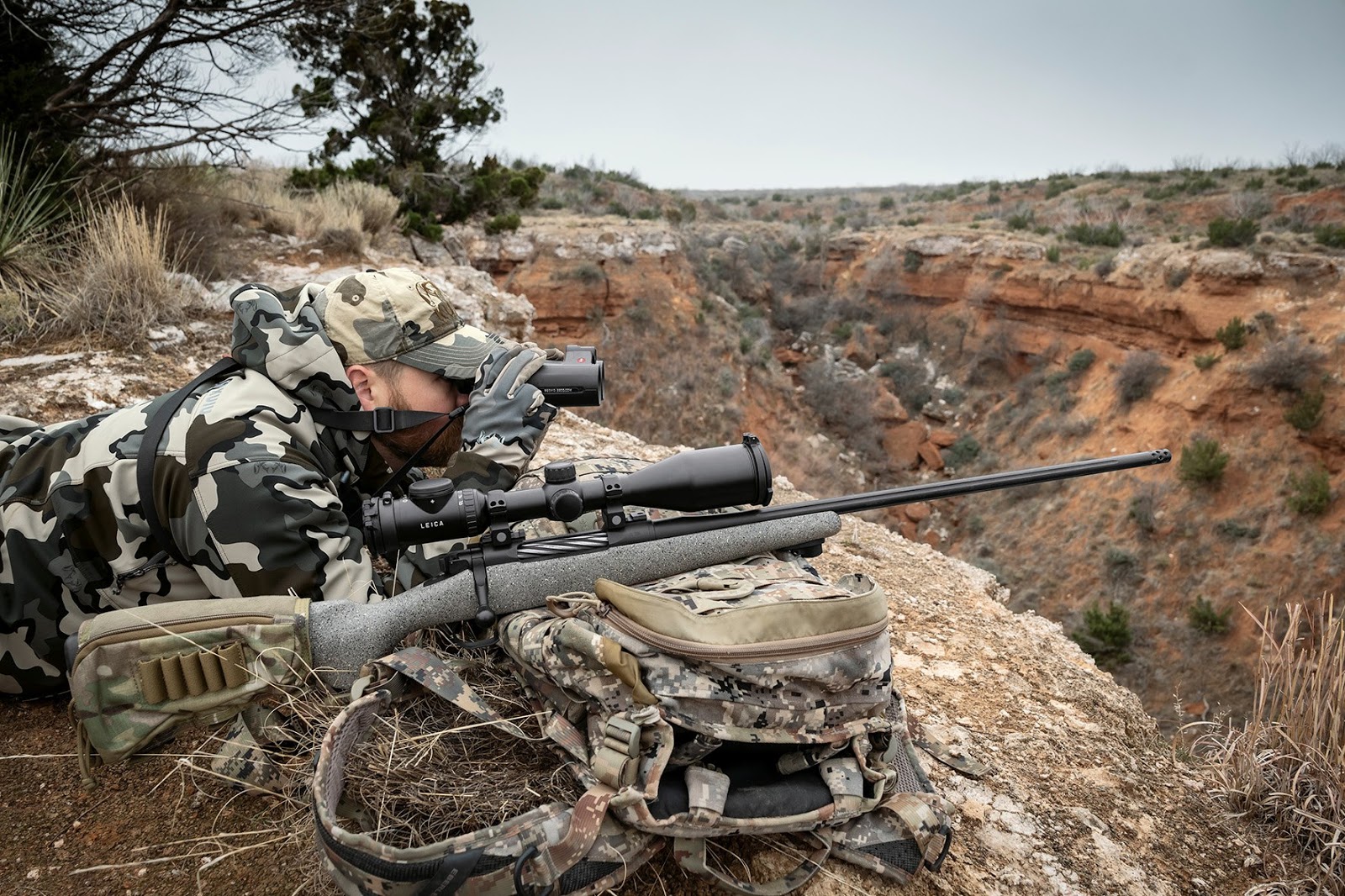
Are the Leica GEOVID 3200.COM the Best Rangefinding Binocular?
As that previous paragraph indicates, the answer to the Geovid’s best assets can’t be answered in the singular. It delivers a stunning image. And it delivers range-adjusted intel to help a shooter hit more targets.
Let’s start with the optics. You might notice the Geovid’s curvaceous shape. The twin barrels bend and dip like an unripe banana. That’s from the internal prism—a special design called a Perger-Porro prism—that bends incoming light differently than standard roof prisms do. The design is not only ergonomic, allowing the hands to comfortably grip the barrels, but it also allows Leica to expand the field of view. The 10×42 Leica Geovid has a 342-foot field of view at 1,000 yards, one of the broadest fields in the industry, and giving the 10×42 a field of view that’s comparable to that delivered by an 8×42 model.
The image from the Geovid 3200.COM is clear and crisp right to the edges. It’s bright, boasting 91 percent light transmission. And Leica’s “AquaDura” and color-correcting coatings on all exterior lenses ensures accurate color fidelity, even in foggy or wet conditions.
The binocular’s controls are smooth and precise. The center-hinge focus control is both fast and accurate, and the 4-step eyecups allow users to fit the device to their eyes and optical prescription. Similarly, the twin diopters—one sharpens the image, the other sharpens the display—are smooth and positive.
The Geovid’s rangefinder is fast and accurate. It’s also powerful, reaching out to 3,200 yards to detect reflective objects. I found that it reliably ranged deer-sized and non-reflective targets to about 1,800 meters, which is more than adequate for most hunting scenarios. The rangefinder also ranges down to 10 yards, making it an option for bowhunters.
The rangefinding display is anchored by a round reticle, rendered in red LED with four intensity levels. The display delivers range, angle, and temperature, as well as an aiming prescription in either the number of clicks to enter on your riflescope, or the amount of holdover required to hit the target. The ballistics information can either be derived from the 12 ballistic curves preloaded on the Leica Geovid, or custom ballistics delivered via Leica’s excellent mobile app or a Kestrel with LiNK.
The unit’s name, 3200.COM, implies that digital connectivity. The rangefinding binocular links to the mobile app through a Bluetooth connection, which means it can communicate with your phone whether or not you have cellular coverage. Linking devices to the app is fast and intuitive.
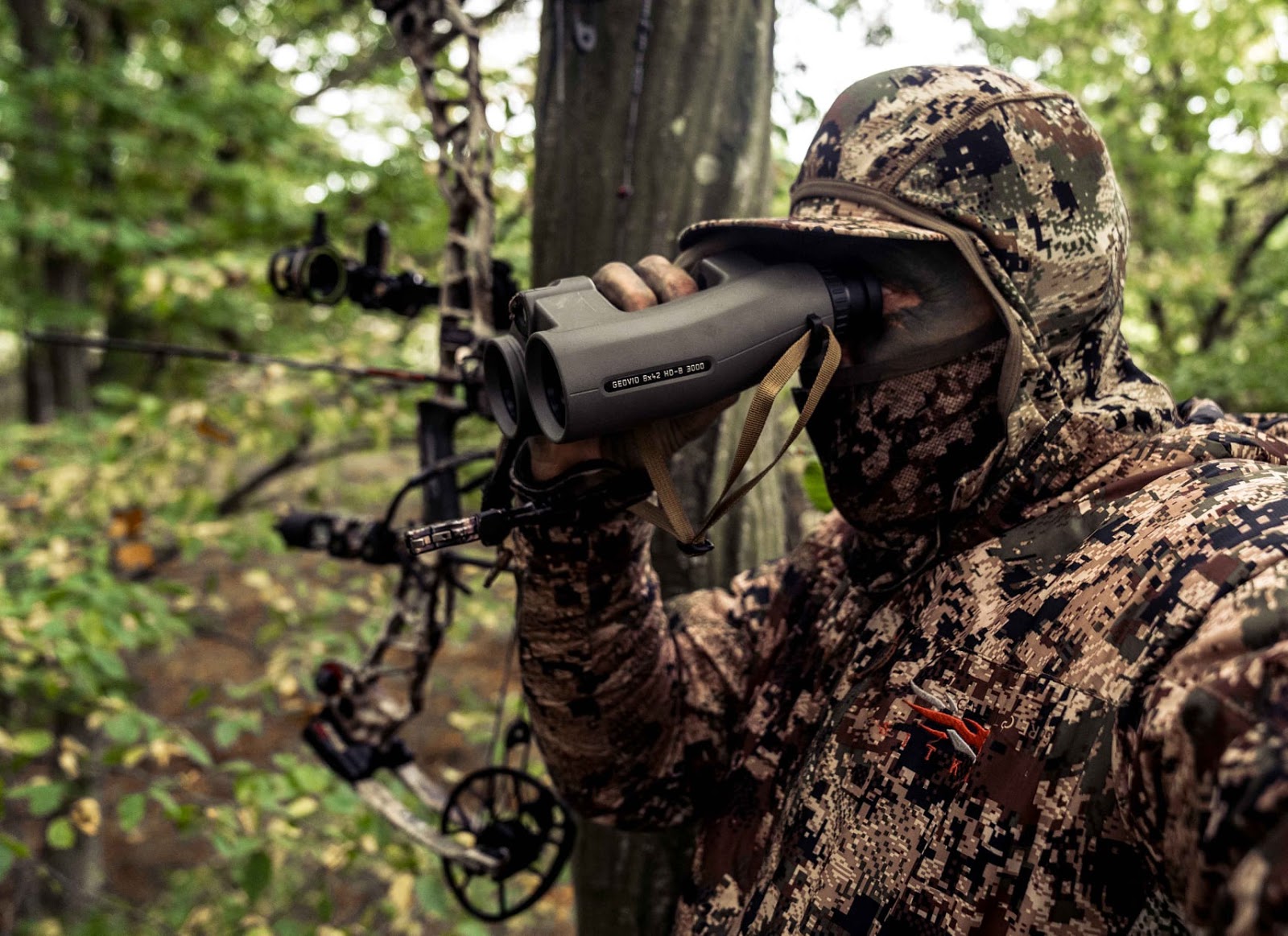
Geovid 3200.COM in the Field
I used the Leica Geovid 3200.COM during last year’s deer season, and also reviewed its predecessor—the Geovid HD-B 3000—in Outdoor Life’s 2019 optics test, during which testers used it for steel-target shooting out to 1,500 yards.
The Leica is durable, versatile, and extremely useful as both an optical device and as a rangefinder. I loaded ballistics from my .280 Ackley Improved—I was shooting Federal’s 155-grain Terminal Ascent—and used it to take mule deer out to 380 yards, about the extent of my self-imposed range for shots at game.
If I have a complaint it’s that the Leica Geovid is a bit heavy. It weighs a touch over two pounds, and while the binocular seems lighter than that in hand, it is a significant load, even in a neoprene chest harness. They also aren’t the compact binocular you expect in a 10×42, due to the built in laser rangefinder.
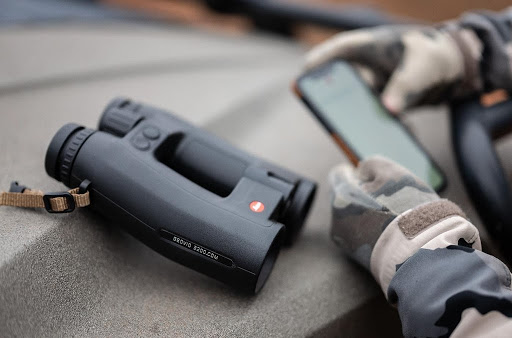
What The Geovid 3200.COM Does Worst
There’s an arms race in the fields and rifle ranges of America, with the goal of enabling the nation’s shooters to be more proficient at long ranges. An entire class of high-end laser rangefinders is emerging that features connectivity to sophisticated mobile apps, and devices like Kestrels, and which feature windage holds as well as a dizzying amount of information to inform aiming solutions at targets a mile and more away.
The Leica Geovid will get you in the game, and its use of Applied Ballistics’ bullet trajectories is a great step forward. But the Leica Geovid is not quite on par with the most technologically advanced rangefinding binoculars. That’s no ding on Leica; the Geovid 3200.COM is a marvelous combination of optical performance and technical proficiency that will definitely get users in the long-range game. It’s just that compared with some of its peers, which feature sophisticated laser engines and high-powered software, the Leica’s interface is a half-beat behind the industry leaders.
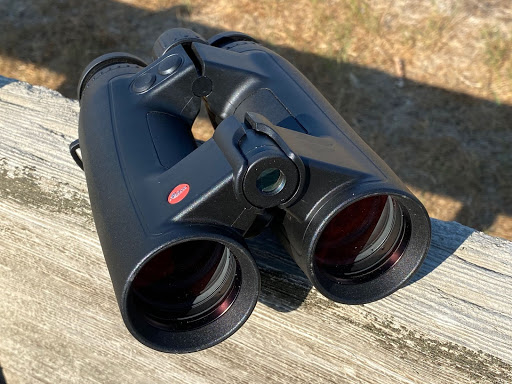
How The Geovid 3200.COM Stacks Up Against Its Peers
The Leica Geovid stands above the competition with its optical clarity. Those rangefinding binoculars that have sophisticated lasers and high-end software are marvelous instruments at informing your DOPE. But their optics are pedestrian. They’re simply not as useful for counting points on a buck at last light or spotting bullet impacts on a steel plate at 1,000 yards.
The Leica is an heirloom-quality optic that happens to house sophisticated electronics. In order to get the best performance out of the Geovid, you need to download the mobile app (Leica Hunting) and then upload the best information from your custom ballistic recipe. One of the foundational tenants of long-range shooting intel is that the more precise information you load into your device (whether a Kestrel or a mobile app or an optic like the Geovid), the better and more precise the output.
If you use the fullest capabilities of the Leica—connecting the Applied Ballistic package to your Kestrel and ensuring that the binocular is tuned not only to the specific ballistics of your rifle, but also to the subtensions of your particular riflescope—then this wondrous binocular will deliver match-winning aiming information.
But it won’t give you windage holds. It isn’t quite as fast as the latest-class lasers on the market. But it will wow you with its image even if the rangefinding battery is dead.
Does The Leica Geovid Accomplish Its Mission?
The Leica Geovid 3200.COM is the best marriage of optical performance and purpose-built electronics on the market. It will deliver years of satisfying performance, even when its peers are moving on to the next technological horizon.
It’s a pricey number, but the Leica Geovid demonstrates the first truism of optics: you get what you pay for. And for me, I’d rather pay for the best-in-class glass than for electronics that can change with every new generation of software.

